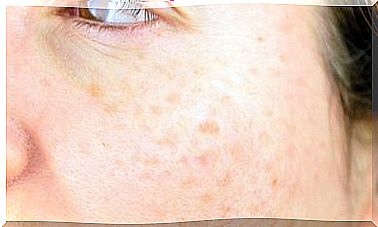Cellular Inflammation And Obesity
Did you know that those who suffer from obesity have what is known as a low-grade inflammatory state? It is not yet known whether this state precedes or follows weight gain, although it is clear that the relationship between cellular inflammation and obesity exists. Here we explain what it is and how to solve it.
The inflammatory state of people with obesity shows once again that our eating behavior – thoughts, decisions and actions related to food – goes beyond wanting or not wanting, being our relationship with food much more complex than that. .
What is cellular inflammation?
We speak of silent -or low-grade cellular inflammation- to refer to the imperceptible inflammation of an organ or tissue that occurs as a consequence of the activation of inflammatory mechanisms in response to the detection of a threat.
However, although it is an important defense mechanism, its activation stimulates the secretion of enzymes that will attack healthy tissue to get rid of the problem. Thus, if it becomes chronic – due to continuous exposure to harmful agents – it ends up damaging the organ or tissue in question.
Chronic cellular inflammation ends up making the body sick in different ways and obesity is one of them.
Cell inflammation and obesity
Currently obesity can be defined as a chronic low-grade inflammatory state given by:
- Changes in the gut microbiota
- Oxidative stress
- Excessive release of pro-inflammatory factors
- Peripheral macrophage over-activation
In this sense, it seems that the relationship between cellular inflammation and obesity begins in adipose tissue : the hypertrophied adipocytes of an obese person secrete pro-inflammatory cytokines and these, in turn, attract pro-inflammatory macrophages. All these substances end up spreading through the body.
To this is added that most of the obesity-generating habits -stress, junk food, insomnia, sedentary lifestyle- are pro-inflammatory per se and, together with the pro-inflammatory substances associated with the adipose tissue of people with obesity, end up generating a generalized inflammatory state that affects most of the body.
In this way, the inflammation generated by adipose tissue is aggravated by that caused by the factors that generate it. In other words, obesity has two sources responsible for its inflammatory state: adipose tissue and the harmful habits that are behind it.

Cell inflammation and hormone resistance
The end result is the appearance of resistance to insulin – the hormone responsible for storing fat – and to leptin – the hormone responsible for satiety. This translates into increased appetite, increased body fat and, with it, increased cellular inflammation.
Thus we can see that cellular inflammation and obesity -excess body fat- make up a positive feedback loop and that the greater the obesity, the greater the inflammatory state and vice versa.
How to solve cellular inflammation?
According to the above, we can understand that solving cellular inflammation is essential if an effective approach to obesity is to be carried out. Here we tell you what you can do to face this inflammatory state.
Omega 3 (EPA)
Current research shows that eicosapentaenoic acid (EPA) has strong anti-inflammatory power and that, when supplemented in optimal doses, it is effective against cellular inflammation.
In this sense, one might think that its supplementation is dispensable. However, although it is true that EPA is found in certain foods, our diet cannot provide it in sufficient quantity – the main natural source is blue fish, which is usually consumed cooked and the heat oxidizes omega 3.
This thermal effect could be avoided by resorting to plant foods that, being rich in omega 3, can be consumed without being subjected to any heat treatment. This is the case of walnuts and, although it is true that it contains omega 3 (ALA), it is not usable by our body.

The role of butyric acid in cellular inflammation
Butyric acid supplementation has also been shown to be effective against cellular inflammation. When buying it, we must make sure that the product has an enteric coating since only then will the butyric acid reach the intestine without having degraded.
However, in this case and unlike what happens with omega 3, supplementation is not necessary. To obtain butyric acid naturally, it is enough to have a healthy intestinal microbiota and consume enough soluble fiber.
Avoid pro-inflammatory behaviors
Among the behaviors that favor the inflammatory state that we have been talking about, we find:
- Insomnia.
- Sedentary lifestyle.
- Stress.
- Consumption of harmful fats: lamb, fat parts of pork and veal, organ meats, industrial pastries.
- Sugar intake : table sugar, processed foods.
- Consumption of foods with a high glycemic index : white rice, white pasta, flour, white bread.
- High exposure to environmental pollution.
- Consumption of toxins: alcohol, tobacco.
- Excessive use of chemicals: perfumes, deodorants.
Discover: Active life: do you need to go to the gym?
Antioxidants against cellular inflammation
If we want to combat cellular inflammation, it is essential to increase the consumption of anti-oxidants. This can be done through foods such as fruit, vegetables, nuts and extra virgin olive oil. Or through supplements based on vitamin E, selenium or astaxatin for example.
When we talk about obesity, we often fall into the error of thinking that it is only a matter of willpower. However, that wanting or not wanting has an origin that must be resolved in order to modify obesogenic behavior. And cellular inflammation is one of the parts of it.









